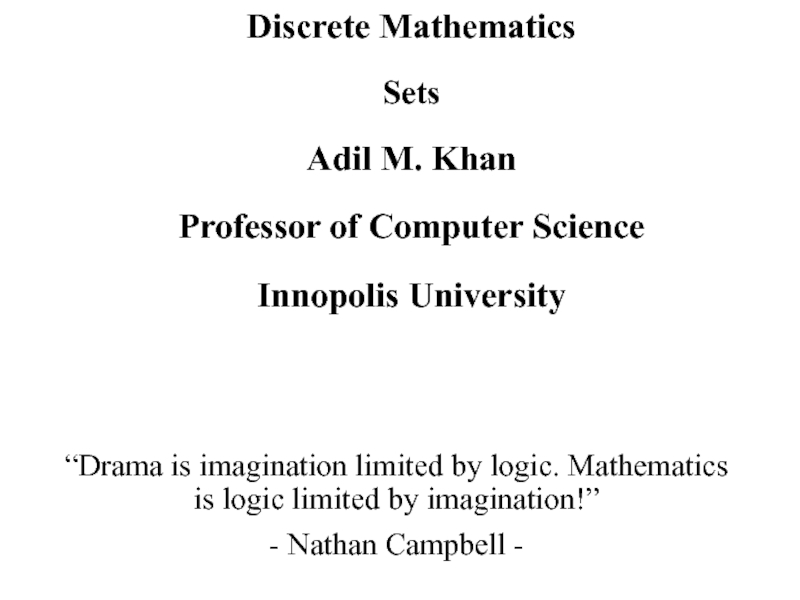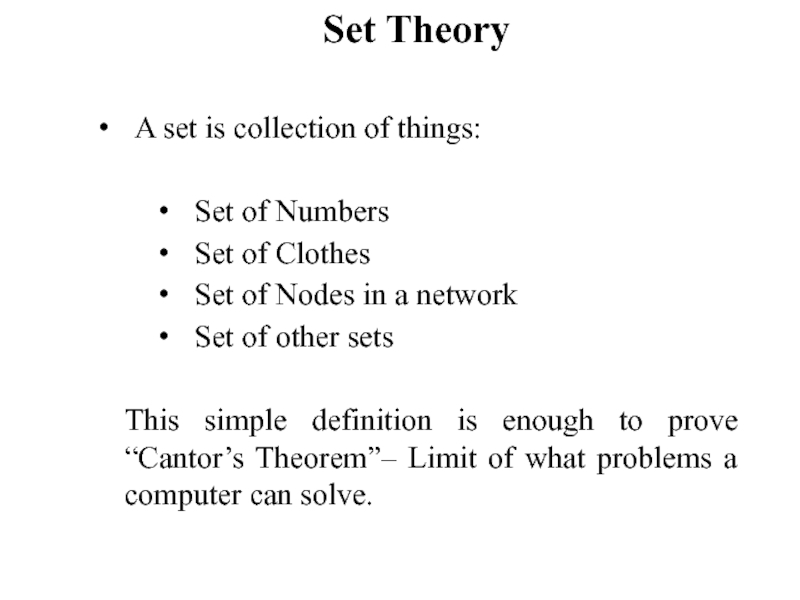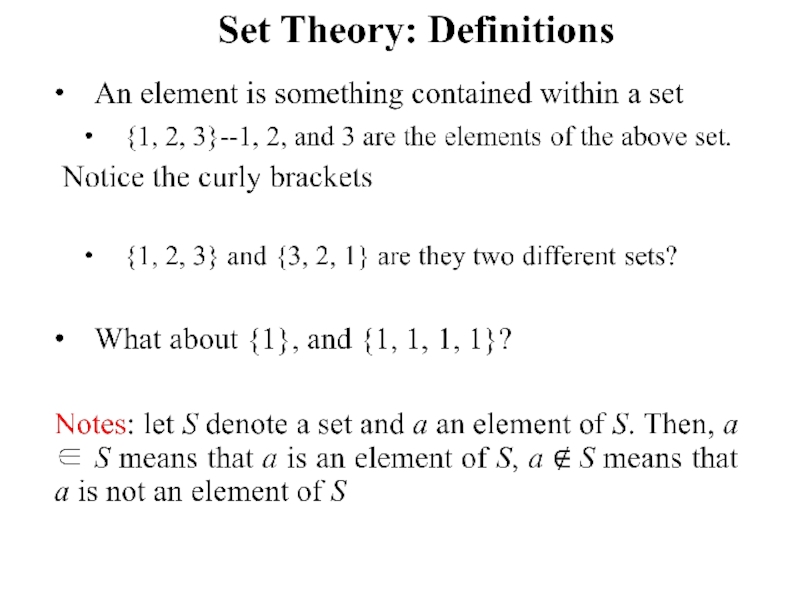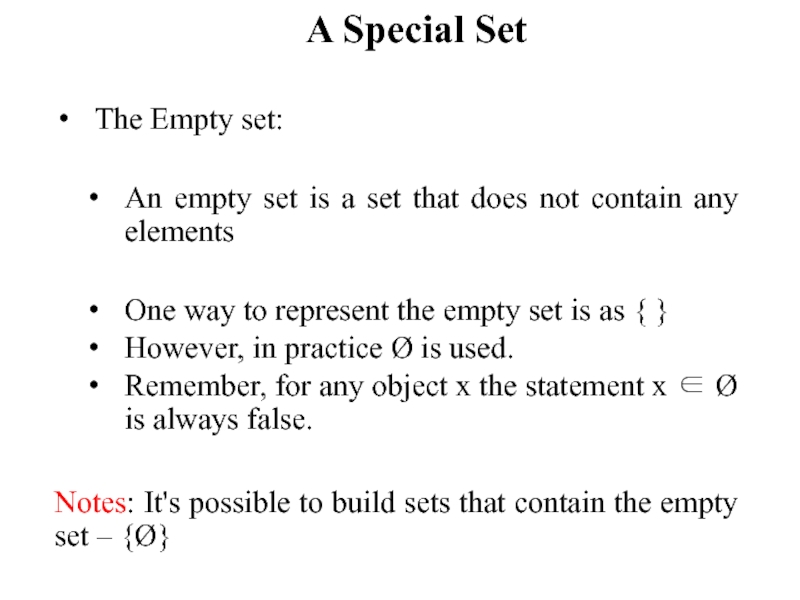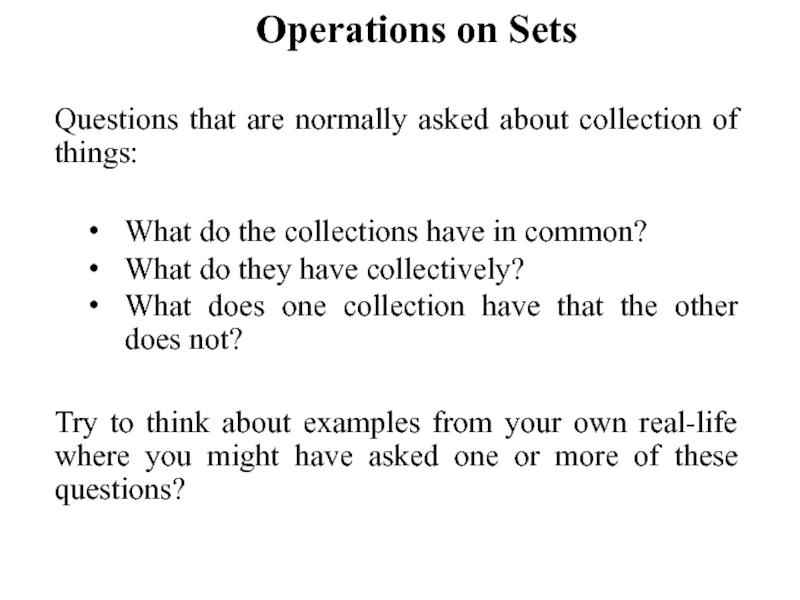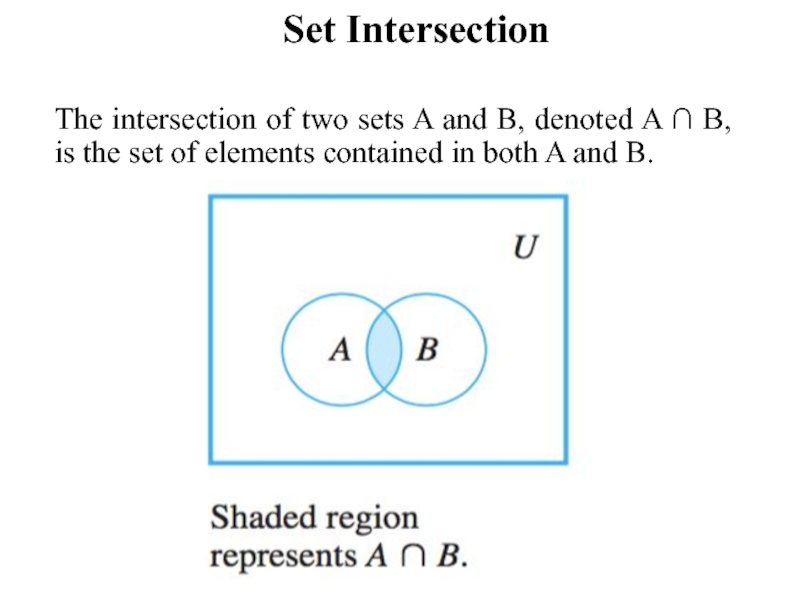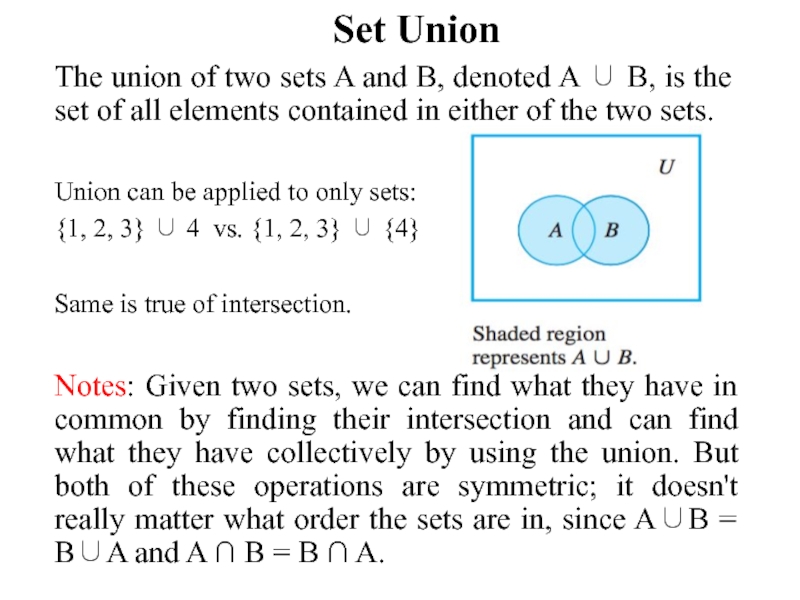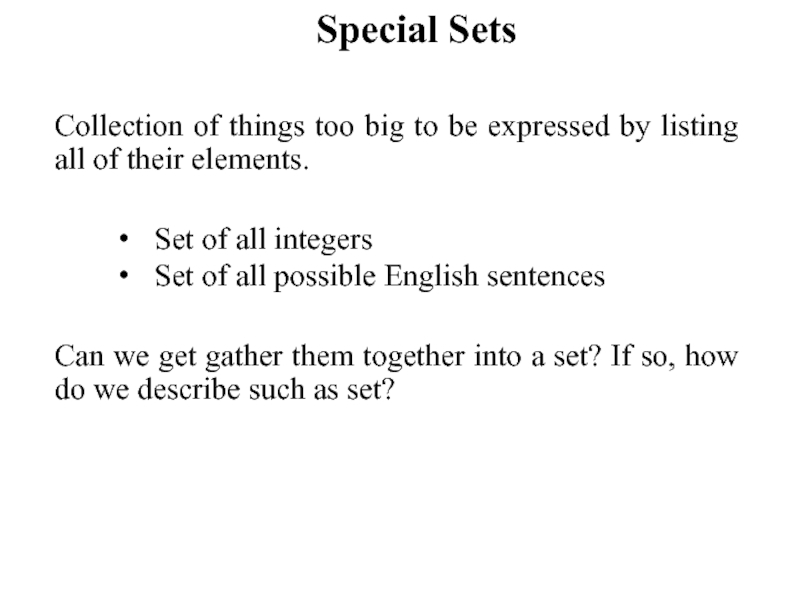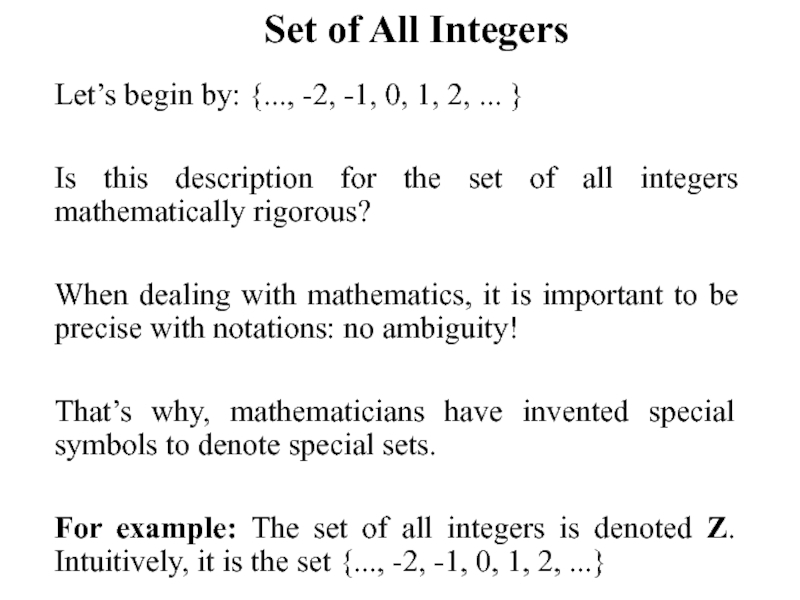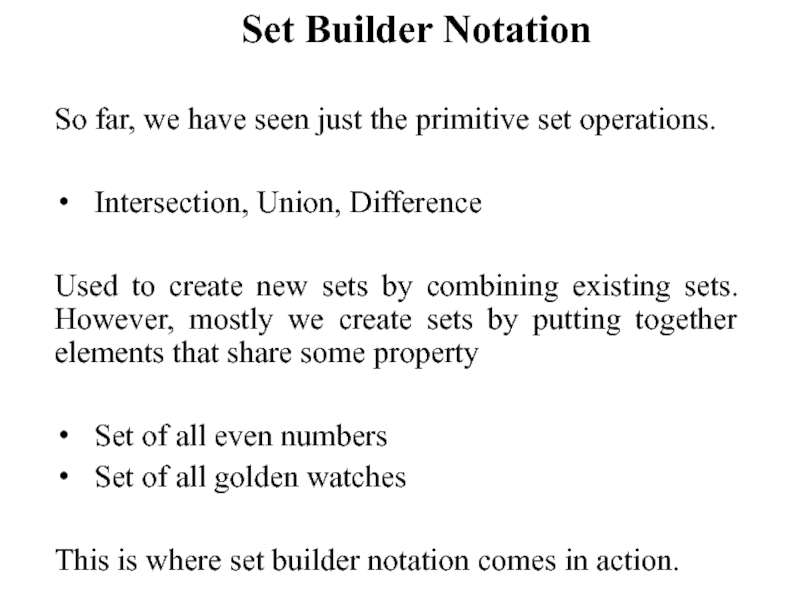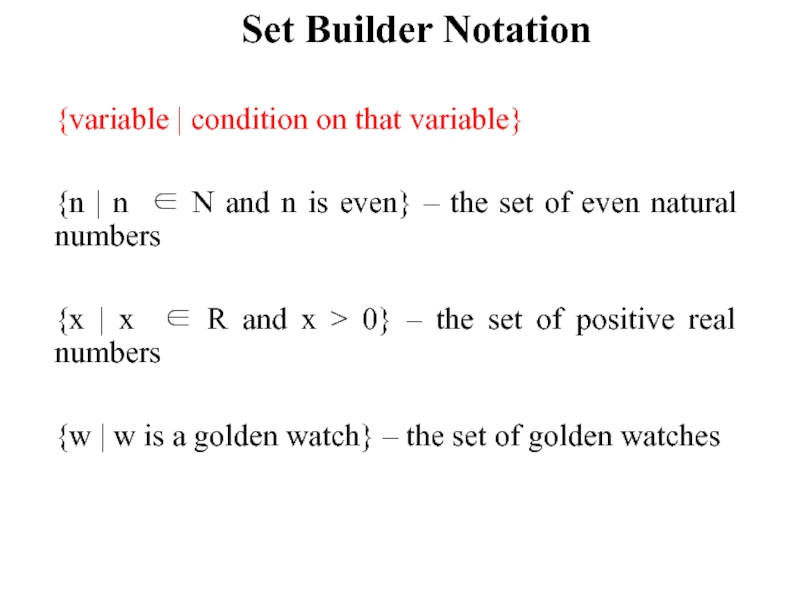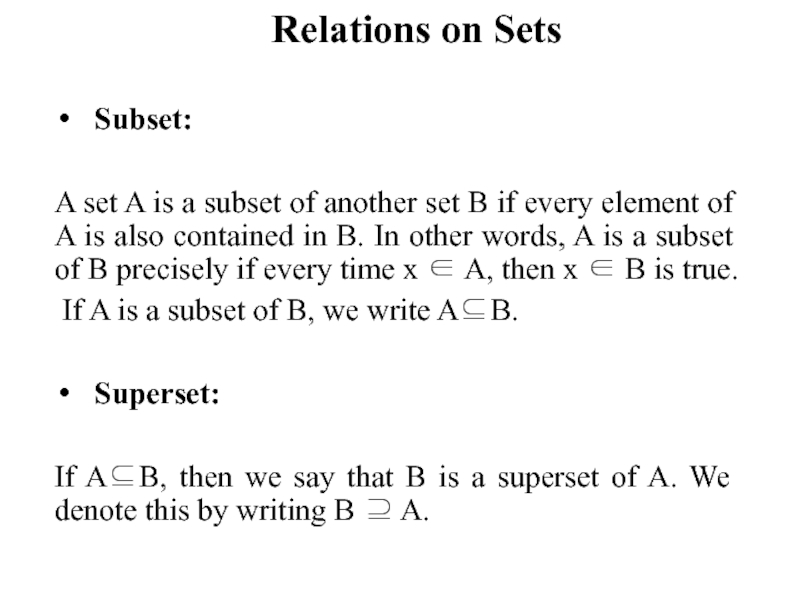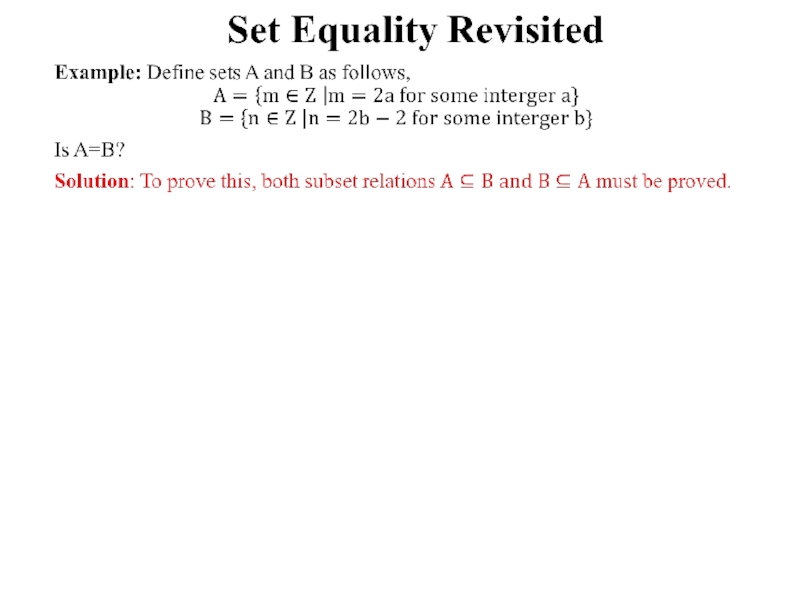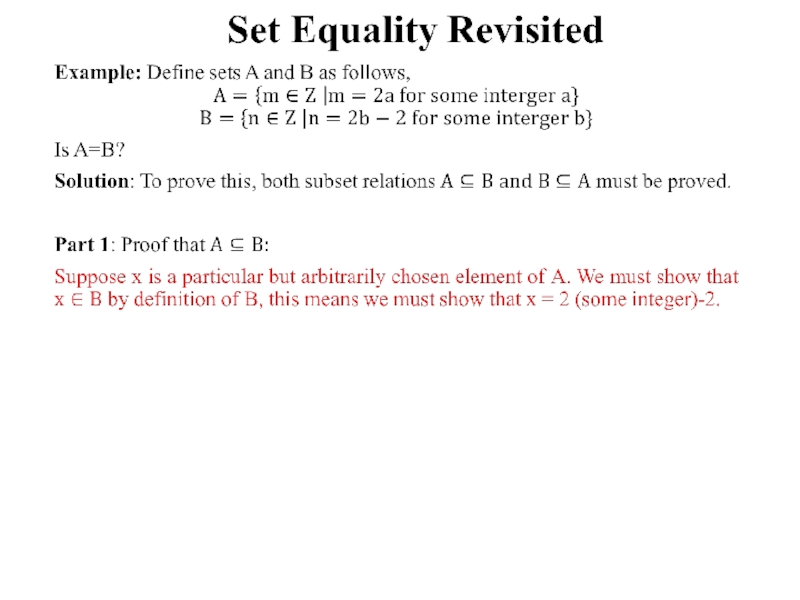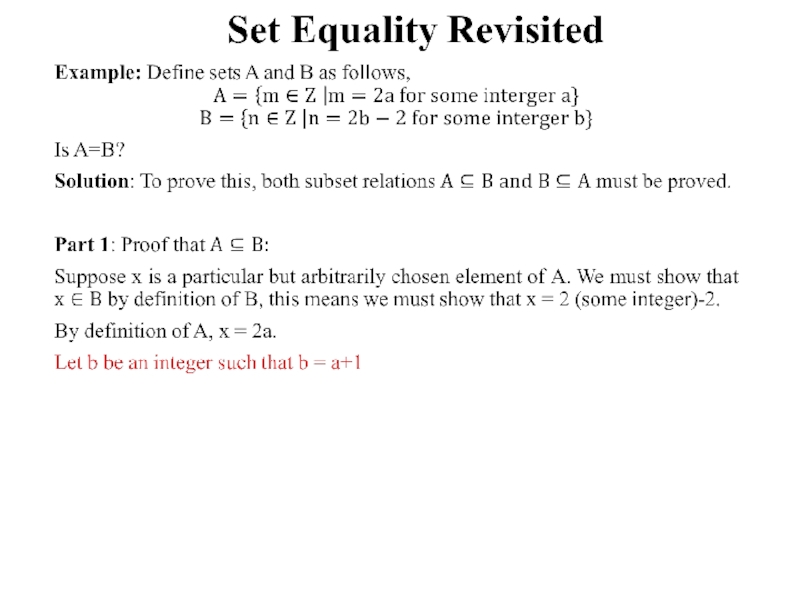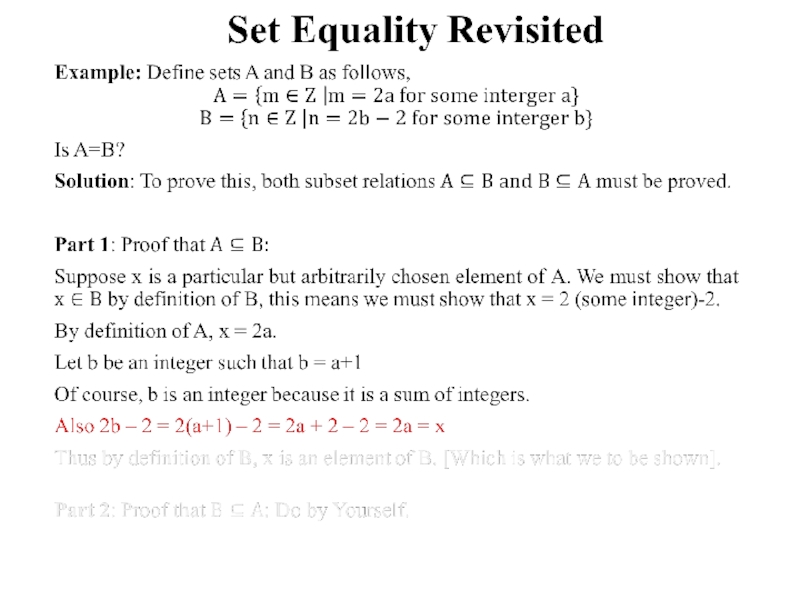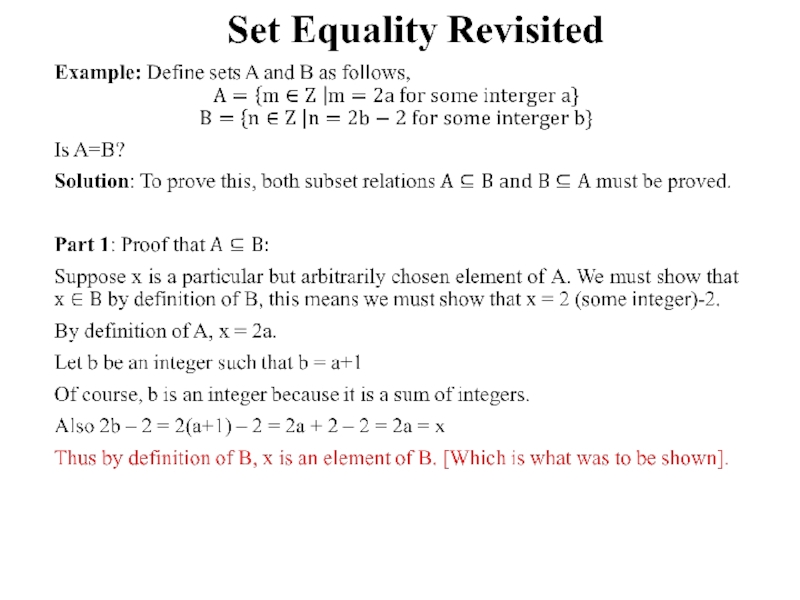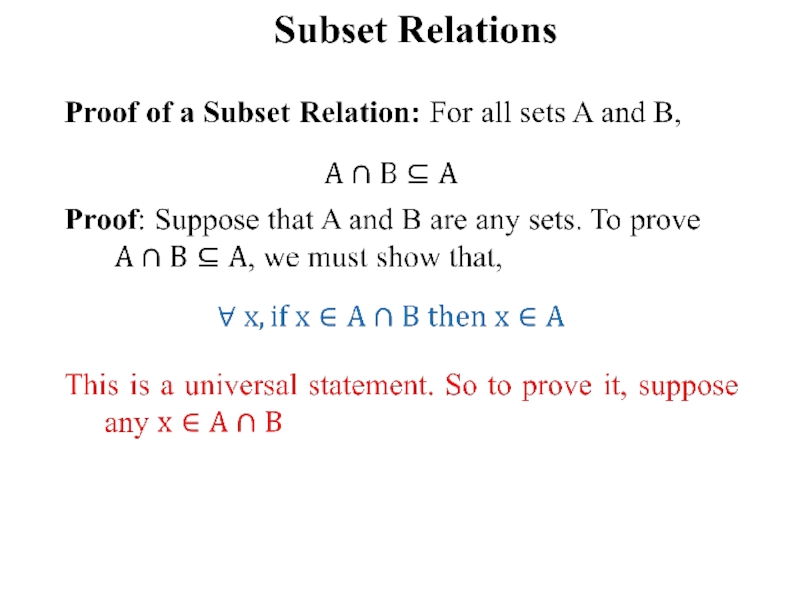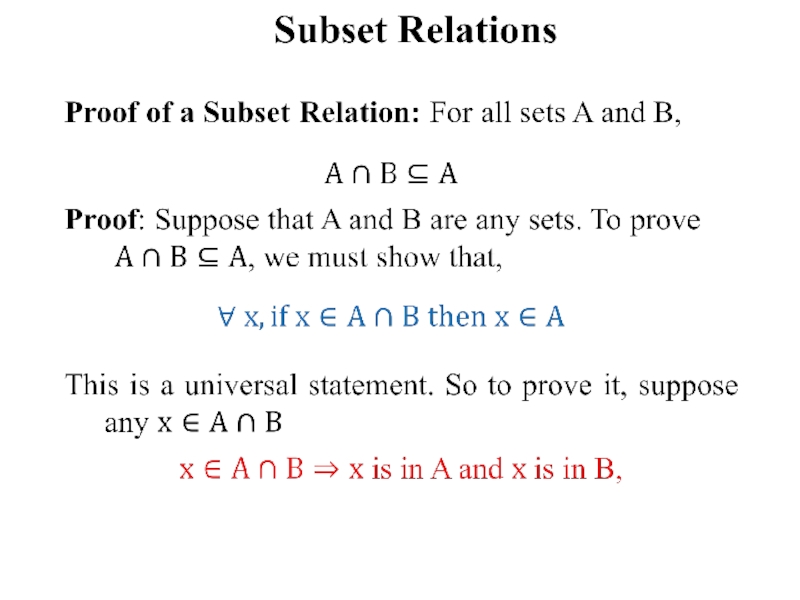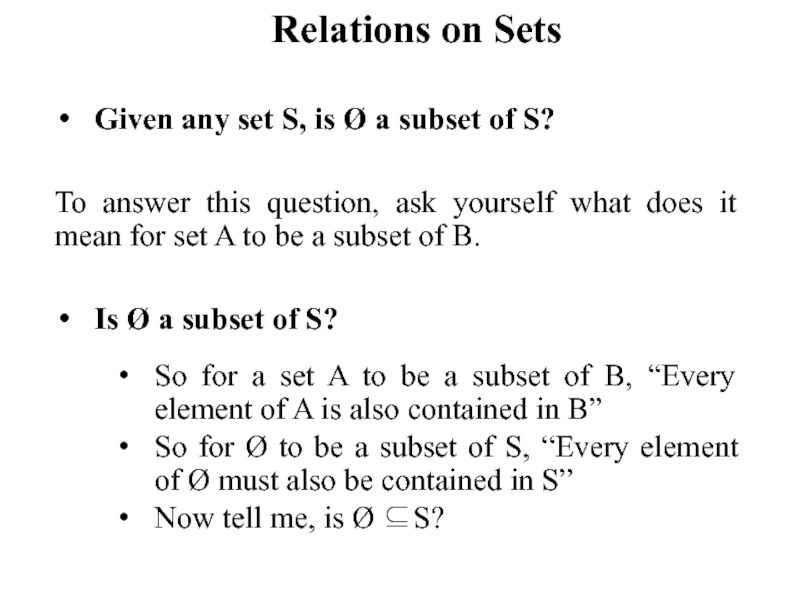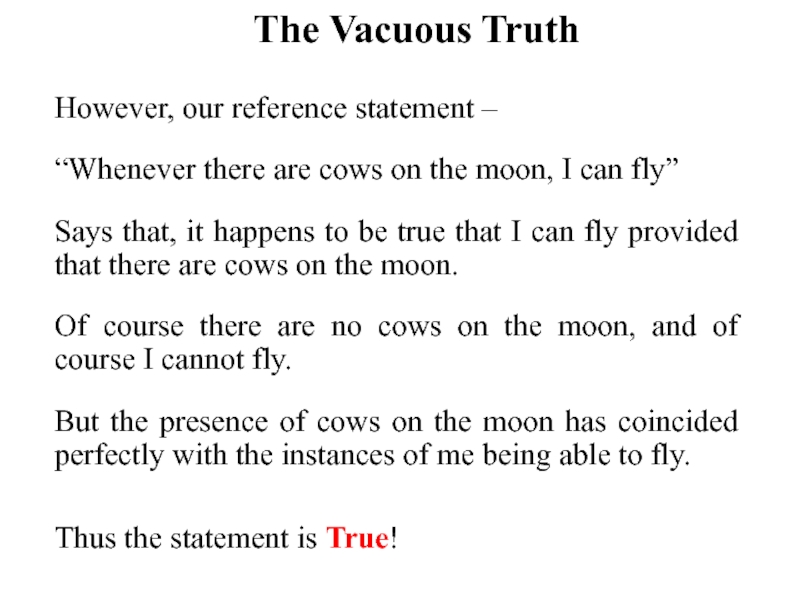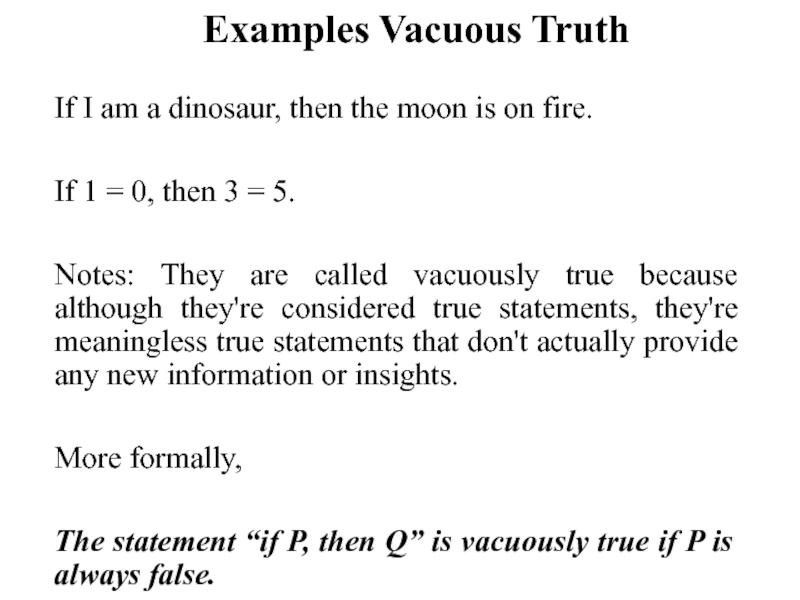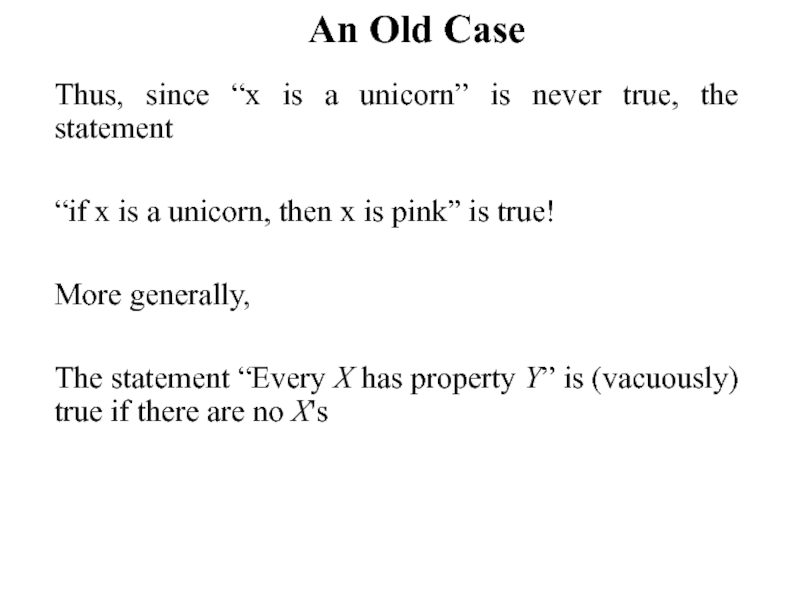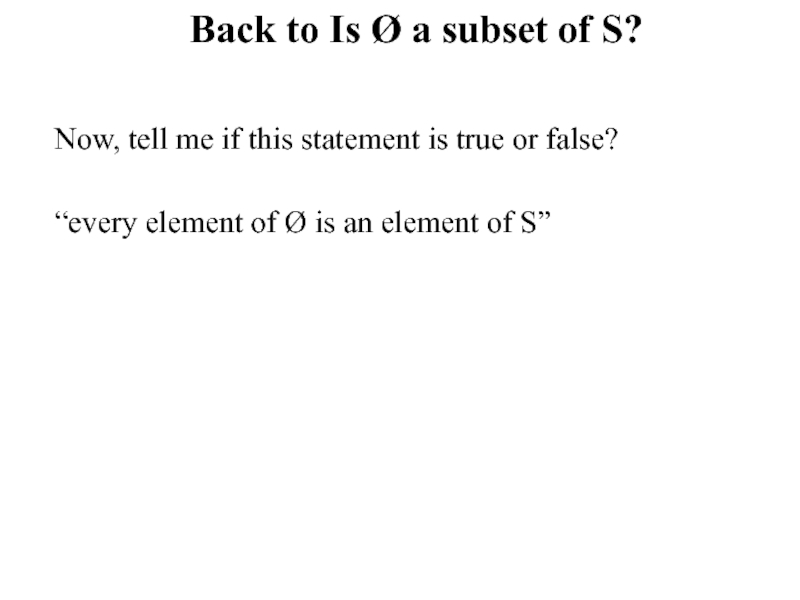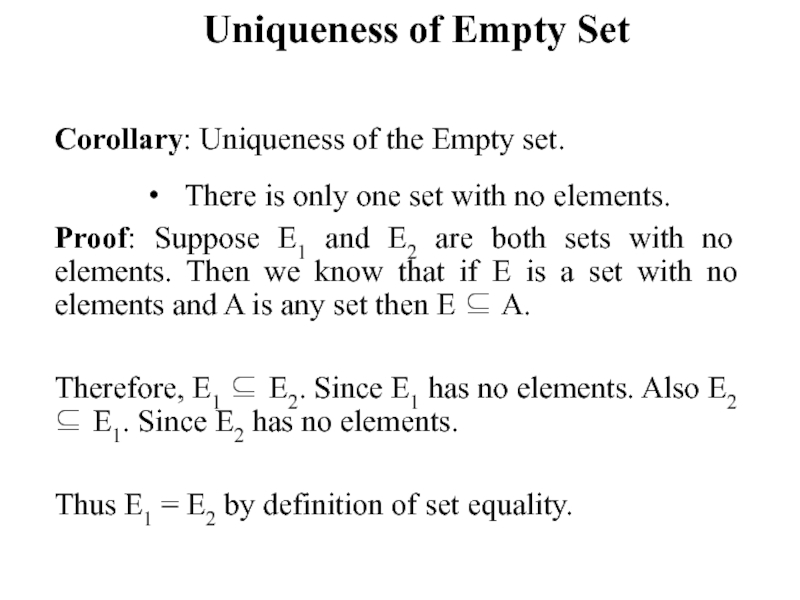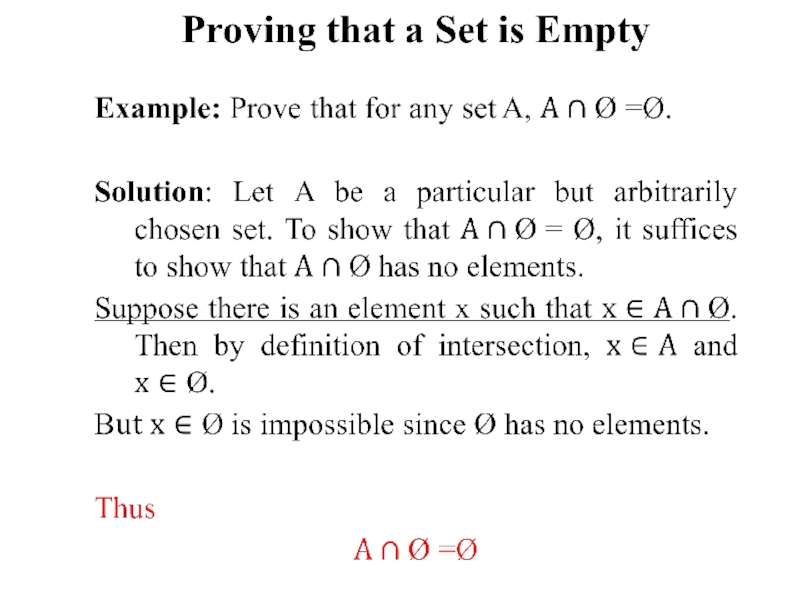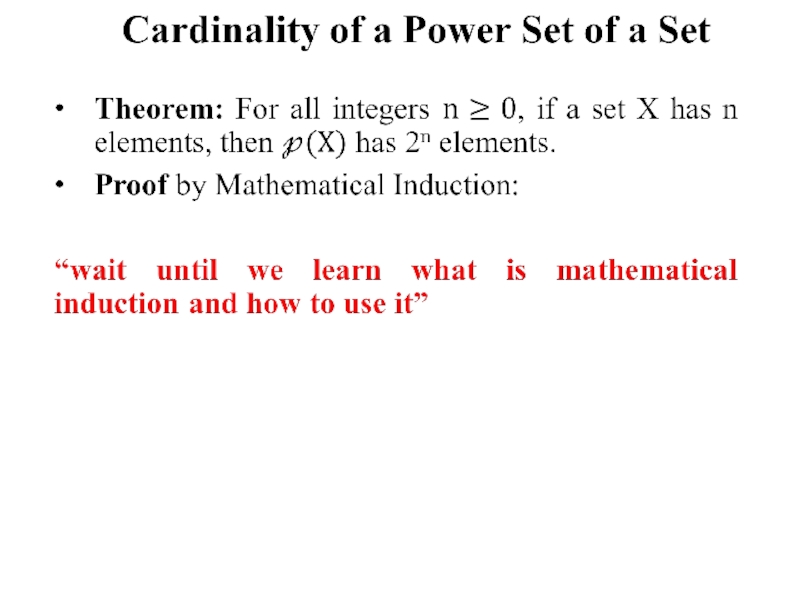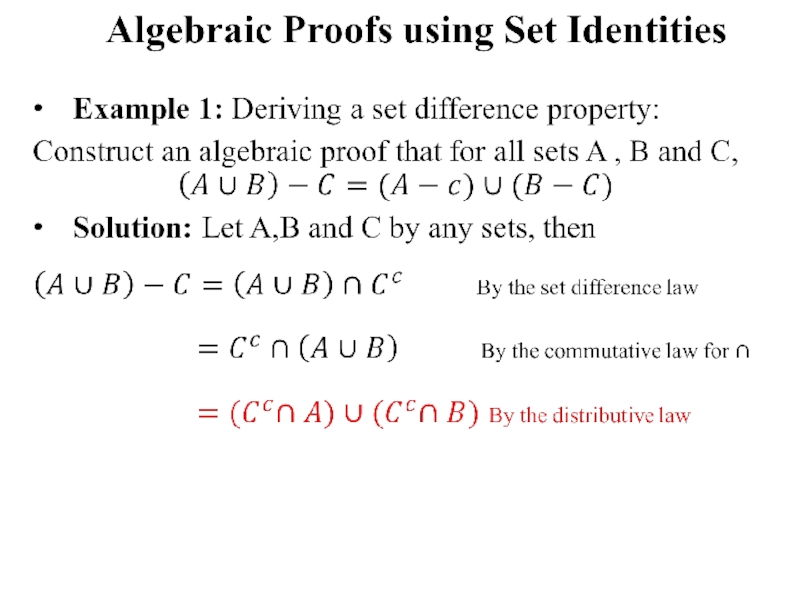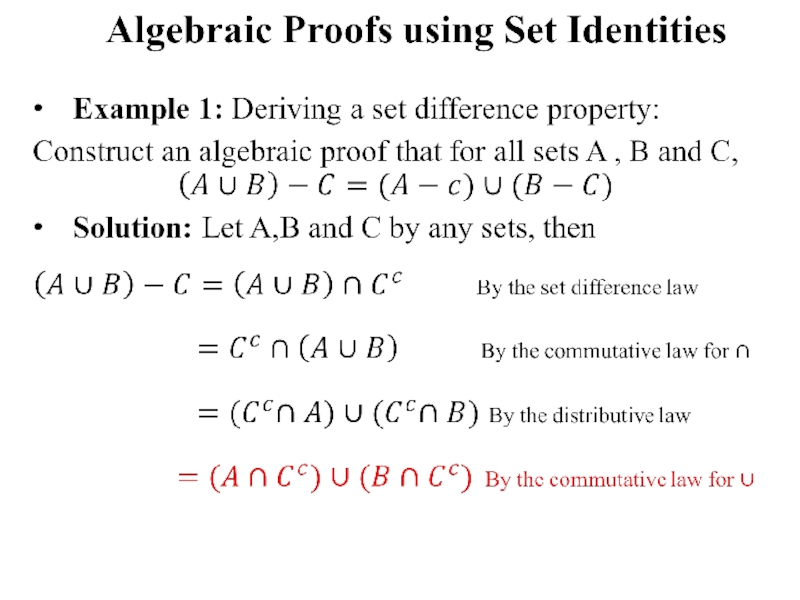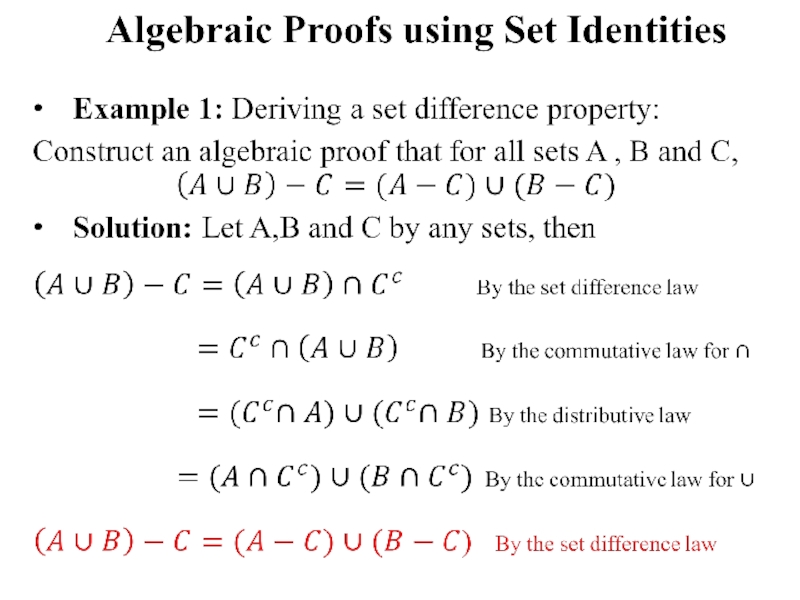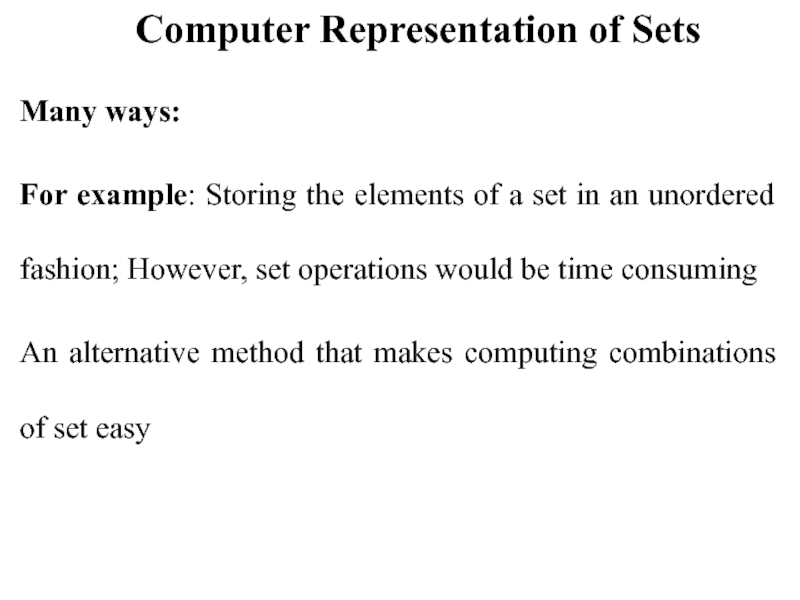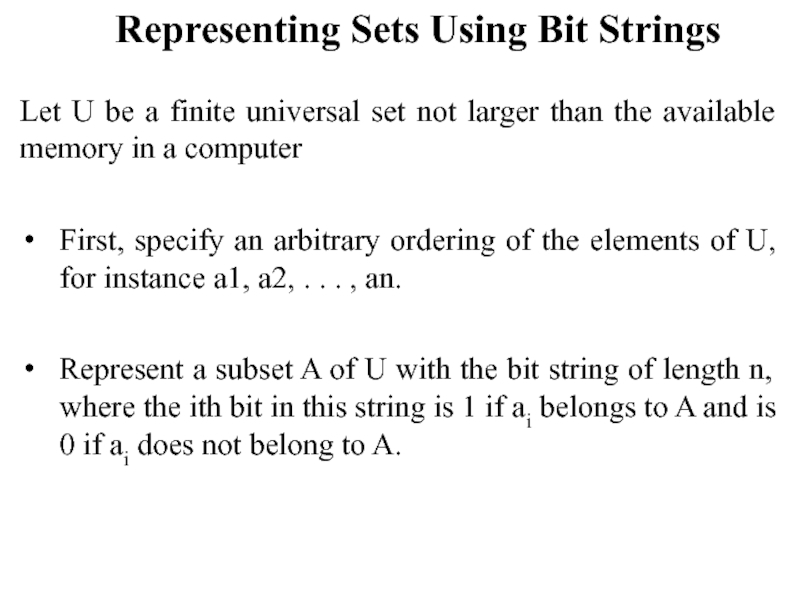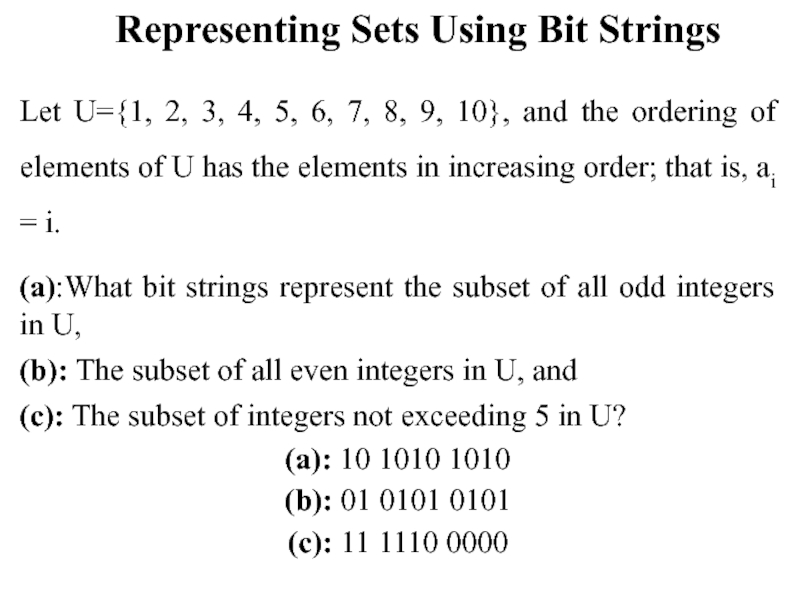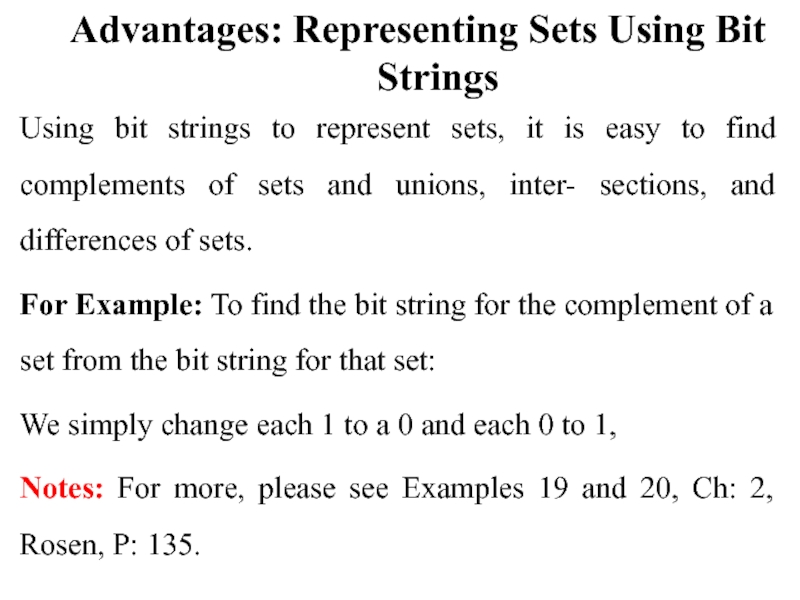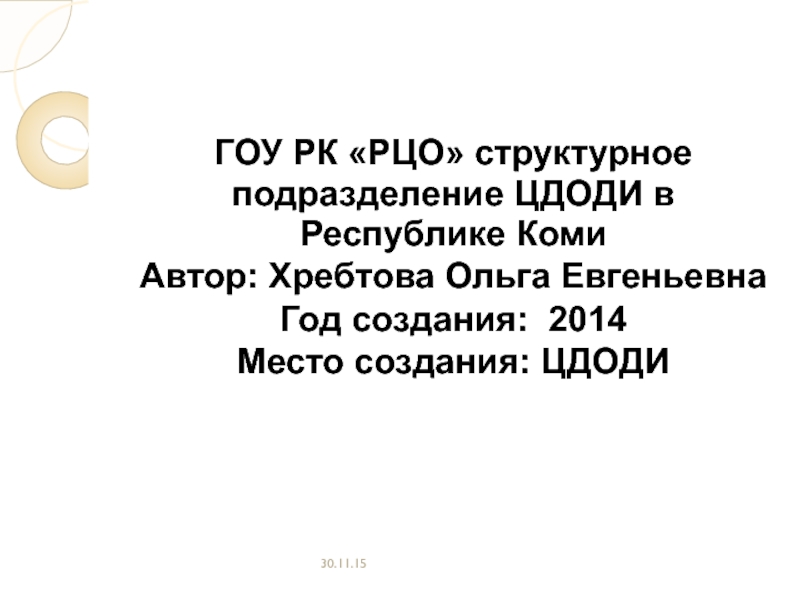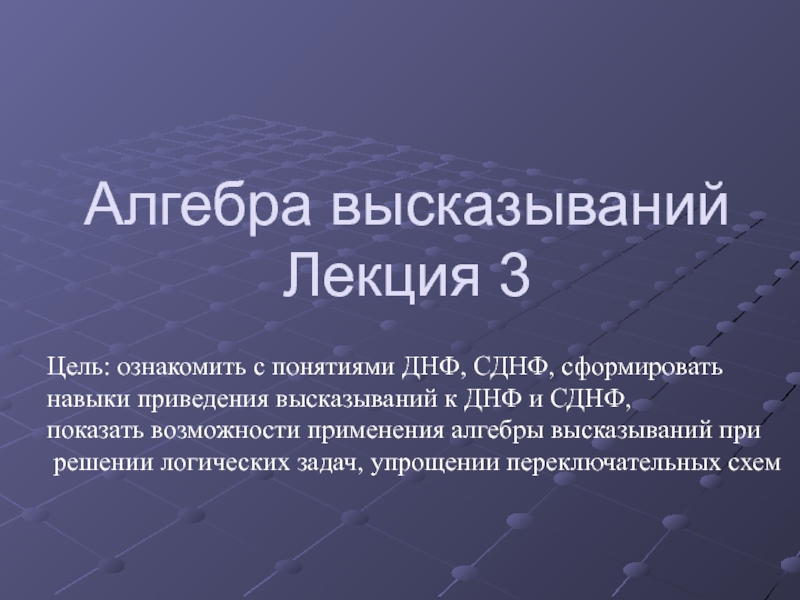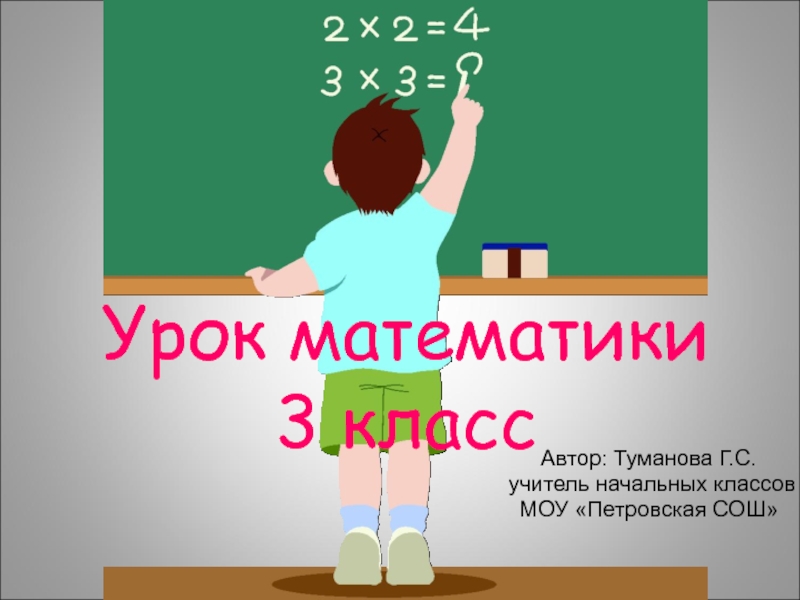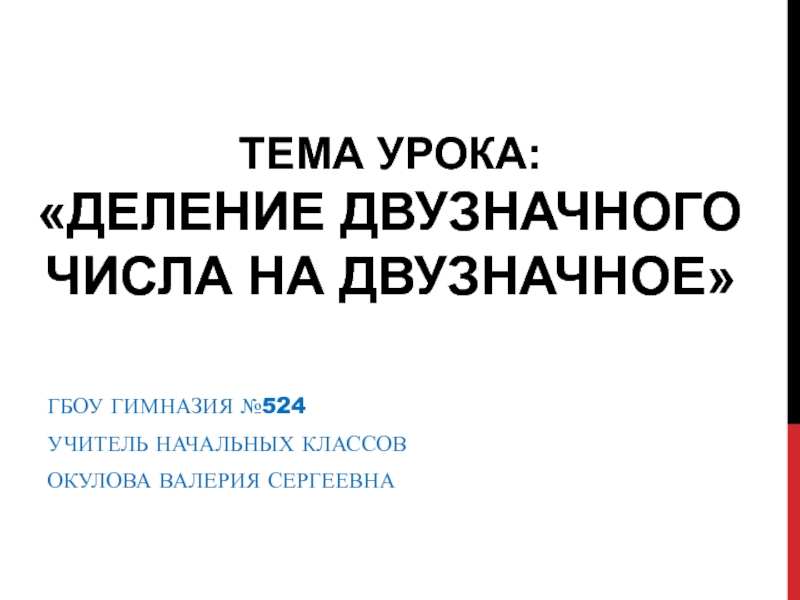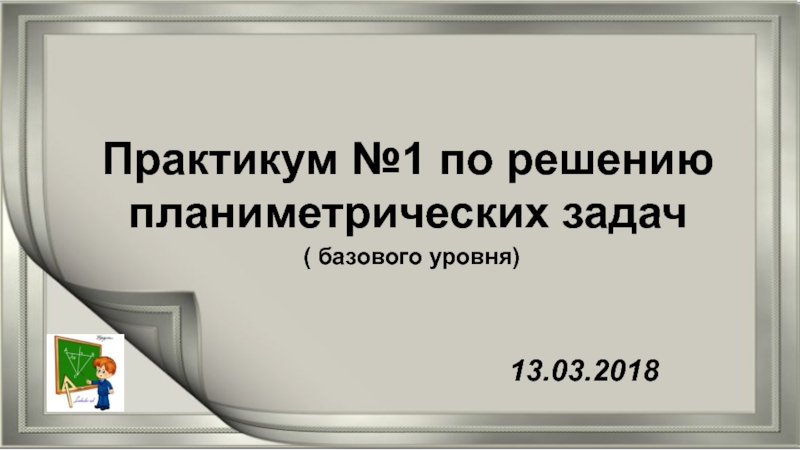is imagination limited by logic. Mathematics is logic limited by imagination!”
- Nathan Campbell -
- Главная
- Разное
- Дизайн
- Бизнес и предпринимательство
- Аналитика
- Образование
- Развлечения
- Красота и здоровье
- Финансы
- Государство
- Путешествия
- Спорт
- Недвижимость
- Армия
- Графика
- Культурология
- Еда и кулинария
- Лингвистика
- Английский язык
- Астрономия
- Алгебра
- Биология
- География
- Детские презентации
- Информатика
- История
- Литература
- Маркетинг
- Математика
- Медицина
- Менеджмент
- Музыка
- МХК
- Немецкий язык
- ОБЖ
- Обществознание
- Окружающий мир
- Педагогика
- Русский язык
- Технология
- Физика
- Философия
- Химия
- Шаблоны, картинки для презентаций
- Экология
- Экономика
- Юриспруденция
Discrete Mathematics Sets презентация
Содержание
- 1. Discrete Mathematics Sets
- 2. Set Theory A set is collection
- 3. Set Theory George Cantor: First
- 4. Set Theory: Definitions What is a
- 5.
- 6. Set Theory: Definitions There is
- 7. A Special Set The Empty
- 8. Operations on Sets Questions that
- 9. Set Intersection The intersection of
- 10. Set Union The union of two sets
- 11. Set Difference The set difference of B
- 12. Set Symmetric Difference The set symmetric difference
- 13. Special Sets Collection of things too
- 14. Set of All Integers Let’s begin
- 15. Other Special Sets The set of
- 16. Set Builder Notation So far, we
- 17. Set Builder Notation {variable | condition
- 18. Predicate To formalize the definition of
- 19.
- 20. Relations on Sets Set Equality:
- 21. Relations on Sets Subset: A
- 22.
- 23.
- 24.
- 25.
- 26.
- 27.
- 28.
- 29.
- 30.
- 31.
- 32.
- 33.
- 34.
- 35.
- 36.
- 37.
- 38.
- 39. Relations on Sets Given any set
- 40. Two Possibilities Since Ø contains no
- 41. Two Possibilities Since Ø contains no
- 42. The Vacuous Truth A statement is
- 43. The Vacuous Truth However, our reference
- 44. Examples Vacuous Truth If I am
- 45. An Old Case “Are all unicorns
- 46. An Old Case Thus, since “x
- 47. Back to Is Ø a subset of
- 48. Back to Is Ø a subset of
- 49. Uniqueness of Empty Set Corollary:
- 50.
- 51.
- 52.
- 53.
- 54.
- 55.
- 56.
- 57.
- 58.
- 59.
- 60.
- 61.
- 62.
- 63.
- 64.
- 65.
- 66. Disproving by Counter Example When, the
- 67.
- 68. Computer Representation of Sets Many
- 69. Representing Sets Using Bit Strings Let
- 70. Representing Sets Using Bit Strings Let
- 71. Advantages: Representing Sets Using Bit Strings Using
Слайд 1Discrete Mathematics
Sets
Adil M. Khan
Professor of Computer Science
Innopolis University
“Drama
Слайд 2Set Theory
A set is collection of things:
Set of Numbers
Set of Clothes
Set of Nodes in a network
Set of other sets
This simple definition is enough to prove “Cantor’s Theorem”– Limit of what problems a computer can solve.
Слайд 3Set Theory
George Cantor:
First to realize the potential usefulness of investigating properties
of sets. Many scientists of his time resisted accepting the validity of his work. Now, abstract set theory is regarded as the foundation of mathematical thought.
Слайд 4Set Theory: Definitions
What is a Set ?
“A set is an unordered
collection of distinct elements”.
What does it mean?
What does it mean?
Слайд 6Set Theory: Definitions
There is no requirement that all the elements
of a set of be the same type.
S = {{1, 2}, {2, 3}, 4}
Does 1 ∈ S?
Does {1, 2} ∈ S?
S = {{1, 2}, {2, 3}, 4}
Does 1 ∈ S?
Does {1, 2} ∈ S?
Слайд 7A Special Set
The Empty set:
An empty set is a set
that does not contain any elements
One way to represent the empty set is as { }
However, in practice Ø is used.
Remember, for any object x the statement x ∈ Ø is always false.
Notes: It's possible to build sets that contain the empty set – {Ø}
One way to represent the empty set is as { }
However, in practice Ø is used.
Remember, for any object x the statement x ∈ Ø is always false.
Notes: It's possible to build sets that contain the empty set – {Ø}
Слайд 8Operations on Sets
Questions that are normally asked about collection of
things:
What do the collections have in common?
What do they have collectively?
What does one collection have that the other does not?
Try to think about examples from your own real-life where you might have asked one or more of these questions?
What do the collections have in common?
What do they have collectively?
What does one collection have that the other does not?
Try to think about examples from your own real-life where you might have asked one or more of these questions?
Слайд 9Set Intersection
The intersection of two sets A and B, denoted
A ∩ B, is the set of elements contained in both A and B.
Слайд 10Set Union
The union of two sets A and B, denoted A
∪ B, is the set of all elements contained in either of the two sets.
Union can be applied to only sets:
{1, 2, 3} ∪ 4 vs. {1, 2, 3} ∪ {4}
Same is true of intersection.
Notes: Given two sets, we can find what they have in common by finding their intersection and can find what they have collectively by using the union. But both of these operations are symmetric; it doesn't really matter what order the sets are in, since A∪B = B∪A and A ∩ B = B ∩ A.
Union can be applied to only sets:
{1, 2, 3} ∪ 4 vs. {1, 2, 3} ∪ {4}
Same is true of intersection.
Notes: Given two sets, we can find what they have in common by finding their intersection and can find what they have collectively by using the union. But both of these operations are symmetric; it doesn't really matter what order the sets are in, since A∪B = B∪A and A ∩ B = B ∩ A.
Слайд 11Set Difference
The set difference of B and A, denoted B –
A or B \ A, is the set of elements contained in B but not contained in A.
Set difference is not symmetric
{3, 4, 5} – {1, 2, 3} vs. {1, 2, 3} – {3, 4, 5}
Set difference is not symmetric
{3, 4, 5} – {1, 2, 3} vs. {1, 2, 3} – {3, 4, 5}
Слайд 12Set Symmetric Difference
The set symmetric difference of two sets A and
B, denoted A Δ B, is the set of elements that are contained in exactly one of A or B, but not both.
For example, {1, 2, 3} Δ {3, 4, 5} = {1, 2, 4, 5}
For example, {1, 2, 3} Δ {3, 4, 5} = {1, 2, 4, 5}
Слайд 13Special Sets
Collection of things too big to be expressed by listing
all of their elements.
Set of all integers
Set of all possible English sentences
Can we get gather them together into a set? If so, how do we describe such as set?
Set of all integers
Set of all possible English sentences
Can we get gather them together into a set? If so, how do we describe such as set?
Слайд 14Set of All Integers
Let’s begin by: {..., -2, -1, 0, 1,
2, ... }
Is this description for the set of all integers mathematically rigorous?
When dealing with mathematics, it is important to be precise with notations: no ambiguity!
That’s why, mathematicians have invented special symbols to denote special sets.
For example: The set of all integers is denoted Z. Intuitively, it is the set {..., -2, -1, 0, 1, 2, ...}
Is this description for the set of all integers mathematically rigorous?
When dealing with mathematics, it is important to be precise with notations: no ambiguity!
That’s why, mathematicians have invented special symbols to denote special sets.
For example: The set of all integers is denoted Z. Intuitively, it is the set {..., -2, -1, 0, 1, 2, ...}
Слайд 15Other Special Sets
The set of all natural numbers, denoted N, is
the set N = {0, 1, 2, 3, ...}
The set of positive natural numbers N+ is the set N+ = {1, 2, 3, ...}
The set of all real numbers is denoted R.
A finite set is a set containing only finitely many elements. An infinite set is a set containing infinitely many elements.
Notes: Some mathematicians treat 0 as a natural number, while others do not.
The set of positive natural numbers N+ is the set N+ = {1, 2, 3, ...}
The set of all real numbers is denoted R.
A finite set is a set containing only finitely many elements. An infinite set is a set containing infinitely many elements.
Notes: Some mathematicians treat 0 as a natural number, while others do not.
Слайд 16Set Builder Notation
So far, we have seen just the primitive set
operations.
Intersection, Union, Difference
Used to create new sets by combining existing sets. However, mostly we create sets by putting together elements that share some property
Set of all even numbers
Set of all golden watches
This is where set builder notation comes in action.
Intersection, Union, Difference
Used to create new sets by combining existing sets. However, mostly we create sets by putting together elements that share some property
Set of all even numbers
Set of all golden watches
This is where set builder notation comes in action.
Слайд 17Set Builder Notation
{variable | condition on that variable}
{n | n ∈
N and n is even} – the set of even natural numbers
{x | x ∈ R and x > 0} – the set of positive real numbers
{w | w is a golden watch} – the set of golden watches
{x | x ∈ R and x > 0} – the set of positive real numbers
{w | w is a golden watch} – the set of golden watches
Слайд 18Predicate
To formalize the definition of “set builder notation”, we will use
the “predicate”
A predicate is a statement about some object x that is either true or false.
Given this definition, the set builder notation can be formally defined as:
“The set { x | P(x) } is the set of all x such that P(x) is true.”
Notes: It turns out that allowing us to define sets this way can, in some cases, leads to paradoxical sets, sets that cannot possibly exist. We'll discuss this later on when we talk about Russell's Paradox.
A predicate is a statement about some object x that is either true or false.
Given this definition, the set builder notation can be formally defined as:
“The set { x | P(x) } is the set of all x such that P(x) is true.”
Notes: It turns out that allowing us to define sets this way can, in some cases, leads to paradoxical sets, sets that cannot possibly exist. We'll discuss this later on when we talk about Russell's Paradox.
Слайд 20Relations on Sets
Set Equality:
If A and B are sets, then A
= B precisely when they have the same elements as one another. This definition is sometimes called the axiom of extensionality.
{1, 2, 3} = {2, 3, 1} = {3, 1, 2}
N = { x | x ∈ Z and x ≥ 0 }
Notes: It is important to note that the manner in which two sets are described has absolutely no bearing on whether or not they are equal; all that matters is what the two sets contain. In other words, it's not what's on the outside (the description of the sets) that counts; it's what's on the inside (what those sets actually contain)
{1, 2, 3} = {2, 3, 1} = {3, 1, 2}
N = { x | x ∈ Z and x ≥ 0 }
Notes: It is important to note that the manner in which two sets are described has absolutely no bearing on whether or not they are equal; all that matters is what the two sets contain. In other words, it's not what's on the outside (the description of the sets) that counts; it's what's on the inside (what those sets actually contain)
Слайд 21Relations on Sets
Subset:
A set A is a subset of another set
B if every element of A is also contained in B. In other words, A is a subset of B precisely if every time x ∈ A, then x ∈ B is true.
If A is a subset of B, we write A⊆B.
Superset:
If A⊆B, then we say that B is a superset of A. We denote this by writing B ⊇ A.
If A is a subset of B, we write A⊆B.
Superset:
If A⊆B, then we say that B is a superset of A. We denote this by writing B ⊇ A.
Слайд 39Relations on Sets
Given any set S, is Ø a subset of
S?
To answer this question, ask yourself what does it mean for set A to be a subset of B.
Is Ø a subset of S?
So for a set A to be a subset of B, “Every element of A is also contained in B”
So for Ø to be a subset of S, “Every element of Ø must also be contained in S”
Now tell me, is Ø ⊆S?
To answer this question, ask yourself what does it mean for set A to be a subset of B.
Is Ø a subset of S?
So for a set A to be a subset of B, “Every element of A is also contained in B”
So for Ø to be a subset of S, “Every element of Ø must also be contained in S”
Now tell me, is Ø ⊆S?
Слайд 40Two Possibilities
Since Ø contains no elements, the claim “every element of
Ø is an element of S” is false, because we can't find a single example of an element of Ø that is contained in S.
Since Ø contains no elements, the claim “every element of Ø is an element of S” is true, because we can't find a single example of an element of Ø that isn't contained in S.
What do you think, which is correct?
Since Ø contains no elements, the claim “every element of Ø is an element of S” is true, because we can't find a single example of an element of Ø that isn't contained in S.
What do you think, which is correct?
Слайд 41Two Possibilities
Since Ø contains no elements, the claim “every element of
Ø is an element of S” is false, because we can't find a single example of an element of Ø that is contained in S.
Since Ø contains no elements, the claim “every element of Ø is an element of S” is true, because we can't find a single example of an element of Ø that isn't contained in S.
What do you think, which is correct?
To understand this, let’s try to understand what is a “vacuous truth”.
Since Ø contains no elements, the claim “every element of Ø is an element of S” is true, because we can't find a single example of an element of Ø that isn't contained in S.
What do you think, which is correct?
To understand this, let’s try to understand what is a “vacuous truth”.
Слайд 42The Vacuous Truth
A statement is vacuously true, if it is true
simply because it does not assert anything.
“A statement which is true but completely void of meaning”
For example: Whenever there are cows on the moon, I can fly
What do you think, can I fly? ☺ -- even though I wish I could
So, the statement “I can fly” is certainly false!
“A statement which is true but completely void of meaning”
For example: Whenever there are cows on the moon, I can fly
What do you think, can I fly? ☺ -- even though I wish I could
So, the statement “I can fly” is certainly false!
Слайд 43The Vacuous Truth
However, our reference statement –
“Whenever there are cows
on the moon, I can fly”
Says that, it happens to be true that I can fly provided that there are cows on the moon.
Of course there are no cows on the moon, and of course I cannot fly.
But the presence of cows on the moon has coincided perfectly with the instances of me being able to fly.
Thus the statement is True!
Says that, it happens to be true that I can fly provided that there are cows on the moon.
Of course there are no cows on the moon, and of course I cannot fly.
But the presence of cows on the moon has coincided perfectly with the instances of me being able to fly.
Thus the statement is True!
Слайд 44Examples Vacuous Truth
If I am a dinosaur, then the moon is
on fire.
If 1 = 0, then 3 = 5.
Notes: They are called vacuously true because although they're considered true statements, they're meaningless true statements that don't actually provide any new information or insights.
More formally,
The statement “if P, then Q” is vacuously true if P is always false.
If 1 = 0, then 3 = 5.
Notes: They are called vacuously true because although they're considered true statements, they're meaningless true statements that don't actually provide any new information or insights.
More formally,
The statement “if P, then Q” is vacuously true if P is always false.
Слайд 45An Old Case
“Are all unicorns pink?”
Would you say “yes” or
“no”?
Notes: There is no unicorn, so how can we say whether they are pink or not.
To answer this, let’s rewrite the statement in “if, then” form
“If x is a unicorn, then x is pink”
Not what do you think? “True” or “False”?
Notes: There is no unicorn, so how can we say whether they are pink or not.
To answer this, let’s rewrite the statement in “if, then” form
“If x is a unicorn, then x is pink”
Not what do you think? “True” or “False”?
Слайд 46An Old Case
Thus, since “x is a unicorn” is never true,
the statement
“if x is a unicorn, then x is pink” is true!
More generally,
The statement “Every X has property Y” is (vacuously) true if there are no X's
“if x is a unicorn, then x is pink” is true!
More generally,
The statement “Every X has property Y” is (vacuously) true if there are no X's
Слайд 47Back to Is Ø a subset of S?
Now, tell me if
this statement is true or false?
“every element of Ø is an element of S”
“every element of Ø is an element of S”
Слайд 48Back to Is Ø a subset of S?
Now, tell me if
this statement is true or false?
“every element of Ø is an element of S”
Thus, For any set S, Ø ⊆ S.
“every element of Ø is an element of S”
Thus, For any set S, Ø ⊆ S.
Слайд 49Uniqueness of Empty Set
Corollary: Uniqueness of the Empty set.
There is
only one set with no elements.
Proof: Suppose E1 and E2 are both sets with no elements. Then we know that if E is a set with no elements and A is any set then E ⊆ A.
Therefore, E1 ⊆ E2. Since E1 has no elements. Also E2 ⊆ E1. Since E2 has no elements.
Thus E1 = E2 by definition of set equality.
Proof: Suppose E1 and E2 are both sets with no elements. Then we know that if E is a set with no elements and A is any set then E ⊆ A.
Therefore, E1 ⊆ E2. Since E1 has no elements. Also E2 ⊆ E1. Since E2 has no elements.
Thus E1 = E2 by definition of set equality.
Слайд 66Disproving by Counter Example
When, the optimistic approach of proving a universal
statement about sets isn’t helping you
You can take the pessimistic approach of disproving the statement by finding a counter example
You can take the pessimistic approach of disproving the statement by finding a counter example
Слайд 68Computer Representation of Sets
Many ways:
For example: Storing the elements of
a set in an unordered fashion; However, set operations would be time consuming
An alternative method that makes computing combinations of set easy
An alternative method that makes computing combinations of set easy
Слайд 69Representing Sets Using Bit Strings
Let U be a finite universal set
not larger than the available memory in a computer
First, specify an arbitrary ordering of the elements of U, for instance a1, a2, . . . , an.
Represent a subset A of U with the bit string of length n, where the ith bit in this string is 1 if ai belongs to A and is 0 if ai does not belong to A.
First, specify an arbitrary ordering of the elements of U, for instance a1, a2, . . . , an.
Represent a subset A of U with the bit string of length n, where the ith bit in this string is 1 if ai belongs to A and is 0 if ai does not belong to A.
Слайд 70Representing Sets Using Bit Strings
Let U={1, 2, 3, 4, 5, 6,
7, 8, 9, 10}, and the ordering of elements of U has the elements in increasing order; that is, ai = i.
(a):What bit strings represent the subset of all odd integers in U,
(b): The subset of all even integers in U, and
(c): The subset of integers not exceeding 5 in U?
(a): 10 1010 1010
(b): 01 0101 0101
(c): 11 1110 0000
(a):What bit strings represent the subset of all odd integers in U,
(b): The subset of all even integers in U, and
(c): The subset of integers not exceeding 5 in U?
(a): 10 1010 1010
(b): 01 0101 0101
(c): 11 1110 0000
Слайд 71Advantages: Representing Sets Using Bit Strings
Using bit strings to represent sets,
it is easy to find complements of sets and unions, inter- sections, and differences of sets.
For Example: To find the bit string for the complement of a set from the bit string for that set:
We simply change each 1 to a 0 and each 0 to 1,
Notes: For more, please see Examples 19 and 20, Ch: 2, Rosen, P: 135.
For Example: To find the bit string for the complement of a set from the bit string for that set:
We simply change each 1 to a 0 and each 0 to 1,
Notes: For more, please see Examples 19 and 20, Ch: 2, Rosen, P: 135.
